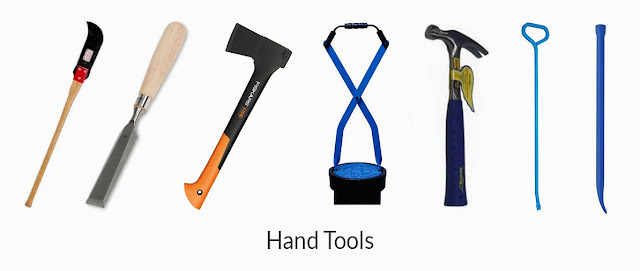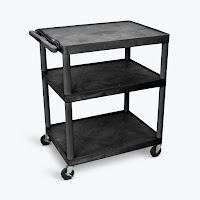Hand Tools
Before machinery and other advanced equipment were designed, people have relied on hand tools to accomplish different tasks. Hand tools pertain to any type of tool that can be used with one’s hands and does not require a motor or electric power. They are generally small and are often found in toolboxes of carpenters, construction workers, land surveyors, and homeowners.
The earlier hand tools date back to the Stone Age, and their primary functions include hammering and cutting. As civilization progressed, so did the design and sturdiness of hand tools that were later made from bronze and iron during the Bronze Age and Iron Age respectively. Also, from being manually forged or molded by craftspeople, hand tools started to be manufactured by factories during the industrial period. This paved the way for different designs and types of hand tools, especially those made from steel and metal.
Wrenches are used to grip and twist objects. They are often used to loosen or tighten nuts, bolts, and even pipes when used in plumbing jobs. Some examples of wrenches are adjustable wrenches, ratchet wrenches, combination wrenches, and open-end wrenches.
Cutters are designed for cutting different materials. Some cutters can cut through soft materials like paper and boxes while others are designed for more robust work like cutting wires and metal. Some tools that can cut and remove excess metal are hand shears and straight cutters.
Striking tools have two components: a weighted head and a handle. They are used to produce an impact on a particular part of an object, and they are available in different designs and sizes to suit different applications. Some examples of striking tools are axes and hammers. They are often used without any other supporting tool, but there are situations when they have to be struck with another object to produce a more powerful impact.
Struck or hammered tools like chisels have sharp tips or bases that allow them to shear, chip, or carve an object. They are used with striking tools, so using them requires caution and attention to prevent unpleasant incidents like hand injuries.
To explore different choices of regular and ergonomic hand tools, be sure to visit Engineer Warehouse.
The earlier hand tools date back to the Stone Age, and their primary functions include hammering and cutting. As civilization progressed, so did the design and sturdiness of hand tools that were later made from bronze and iron during the Bronze Age and Iron Age respectively. Also, from being manually forged or molded by craftspeople, hand tools started to be manufactured by factories during the industrial period. This paved the way for different designs and types of hand tools, especially those made from steel and metal.
Types and Uses of Hand Tools
Hand tools can be categorized according to their type and purpose. The American Industrial Hygiene Association has established this categorization and named the following as the general types of hand tools: wrenches, pliers, cutters, striking tools, struck or hammered tools, screwdrivers, clamps, snips, saws, drills, and knives. Let’s look into more details about some of them:Wrenches are used to grip and twist objects. They are often used to loosen or tighten nuts, bolts, and even pipes when used in plumbing jobs. Some examples of wrenches are adjustable wrenches, ratchet wrenches, combination wrenches, and open-end wrenches.
Cutters are designed for cutting different materials. Some cutters can cut through soft materials like paper and boxes while others are designed for more robust work like cutting wires and metal. Some tools that can cut and remove excess metal are hand shears and straight cutters.
Striking tools have two components: a weighted head and a handle. They are used to produce an impact on a particular part of an object, and they are available in different designs and sizes to suit different applications. Some examples of striking tools are axes and hammers. They are often used without any other supporting tool, but there are situations when they have to be struck with another object to produce a more powerful impact.
Struck or hammered tools like chisels have sharp tips or bases that allow them to shear, chip, or carve an object. They are used with striking tools, so using them requires caution and attention to prevent unpleasant incidents like hand injuries.
Ergonomic Hand Tools
Because of the design and usage of hand tools, they are often associated with hand strains and body aches. Thankfully, many manufacturers have responded to this problem, leading to the development of ergonomically designed tools like ergonomic manhole hooks, popper hooks, and the like.To explore different choices of regular and ergonomic hand tools, be sure to visit Engineer Warehouse.



Comments
Post a Comment